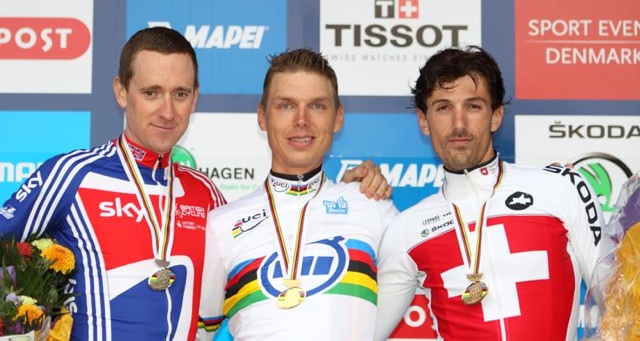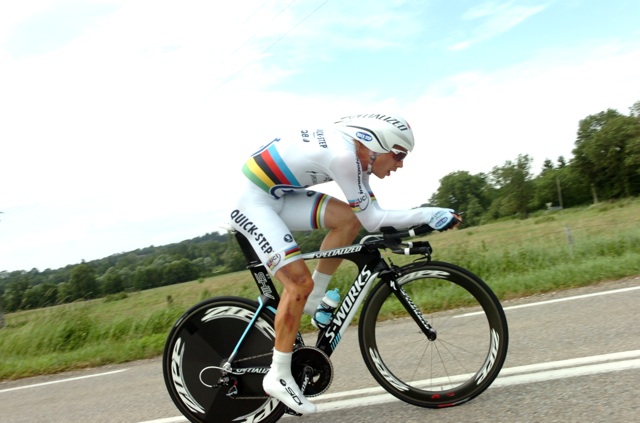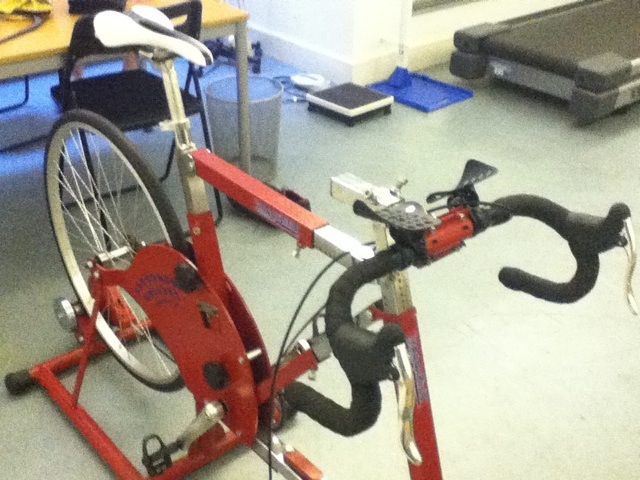The time trial will take centre stage this summer.
The Tour de France has three races against the clock, supposedly favouring Britain’s Bradley Wiggins. Ten days after the finish of the Tour, Wiggins, Cancellara, Martin et al will race the clock in a bid for Olympic time trial glory.
The three riders described above are off different builds and different skills beyond the time trial: Wiggins, the tall, super light track specialist turned climber; Cancellara, the quintessential Classics hardman, and Martin, like Boasson Hagen and Thomas, one of a select group of riders capable of excelling in a range of roles from sprint lead out man to stage race GC contender.

So what physiological characteristics unite this seemingly diverse trio? And what can riders outside of the WorldTour peloton (the rest of us) learn from their example?
We asked Dr Auriel Forrester, a senior coach with the Association of British Cycle Coaches, director of Scientific Coaching, and co-author of Starting Cycle Road Racing and Time Trials, for her insight into the physiological requirements that make a good time trialist.
Time trials are conducted just above a rider’s lactate threshold and so lactic acid accumulates throughout the event, she says. “Thus lactate tolerance is a key physiological attribute needed by short distance trialists.”
“Of course this is partly the ability to ‘suffer’, but also relates to the body’s mix of fibre types – some muscle fibre types being naturally and trainably better able to cope with higher lactate levels,” she said.
Forrester has conducted tests and concluded that those with threshold power of around 95 per cent make better time trialists. “This attribute is partly down to training effect, but mainly genetic,” she says. To a large extent, then, time trialists are born not made.

Cancellara and Wiggins are known for the amount of power they are able to produce. Cancellara’s epic ride off the front to win the 2010 Paris-Roubaix, and many of Wiggins’ track successes, or even his extended pull on the front for Team GB at last year’s world road race championships are evidence of either rider’s ability to crank out watts when required. Is it this ability that has made them so successful against the clock? And if so, should club riders be directing their training at developing power?
“A good short distance time trialist needs a good powerful engine – pure watts are far more important than power to weight ratio on what are traditionally fairly flat or gently rolling courses,” says Dr Forrester. “A good pair of lungs to feed that aerobic engine and a body shape that can accommodate an aerodynamic position without compromising power generation are also high on the list of requirements.”
Interestingly, the power requirement lessens as the length of the time trial increases, according to Forrester. The 25 mile distance, the blue riband of British time trialing, requires similar physiological requirements, but not quite as marked. “A 25mile TT would typically be conducted just below ‘threshold’ power – indeed threshold power is often estimated as being between a riders10 mile and 25 mile time trial efforts,” she says.
Longer time trial distances (those of 50 and 100 miles) and even 12 and 24 hour events where success is measured by the amount of miles covered within the given time, bring additional demands, says Dr Forrester. “They require not only a good engine but also are more physically demanding on the body due to the sheer time in the saddle and also nutrition is important to make sure performance doesn’t drop off due to lack of fuel,” she says.





